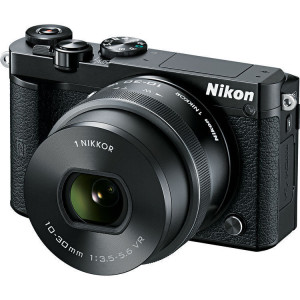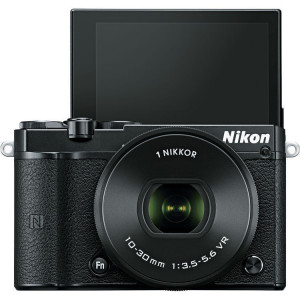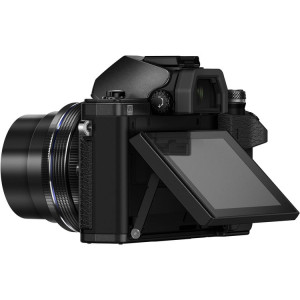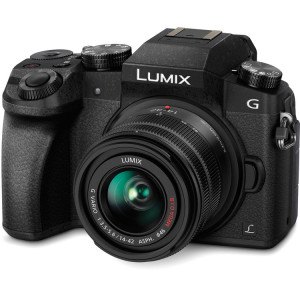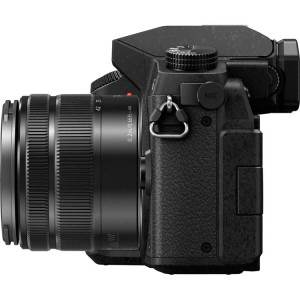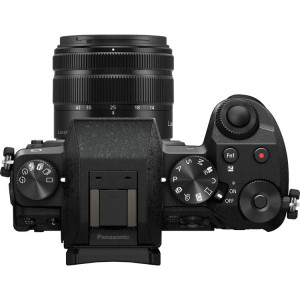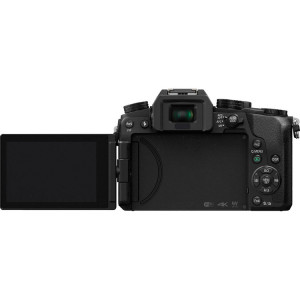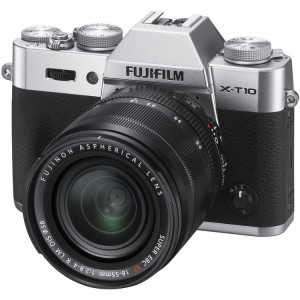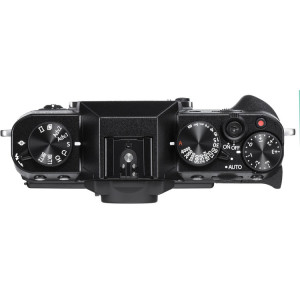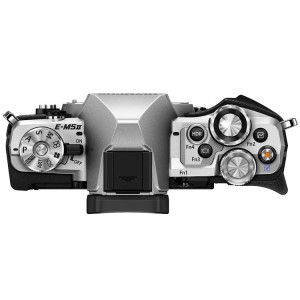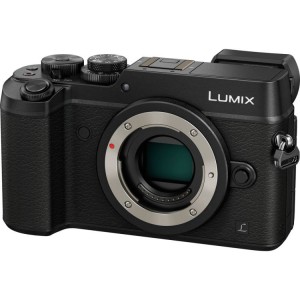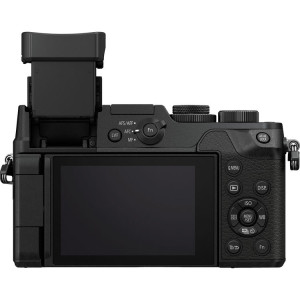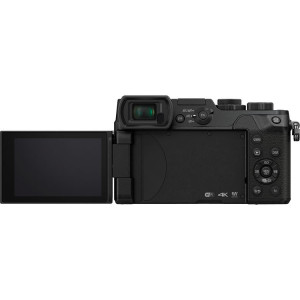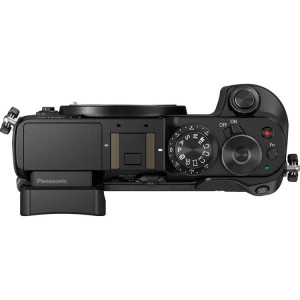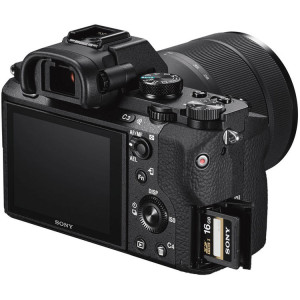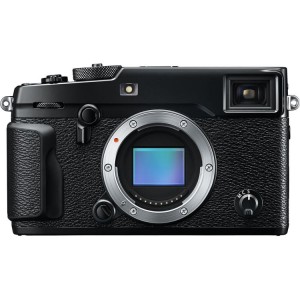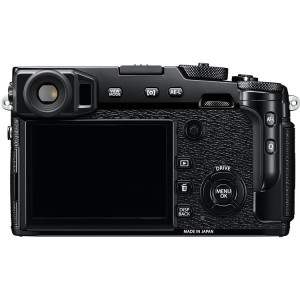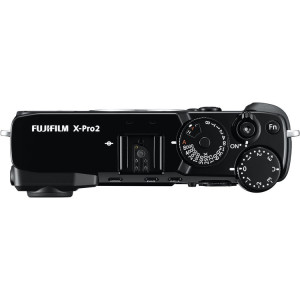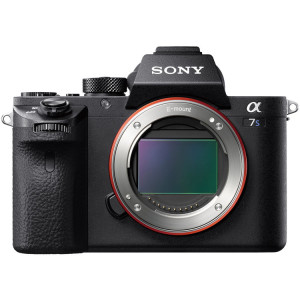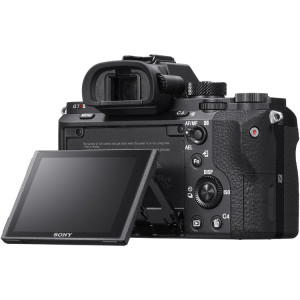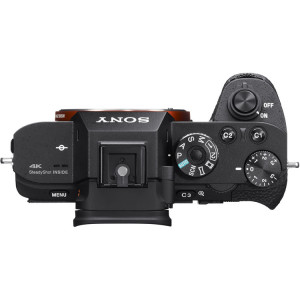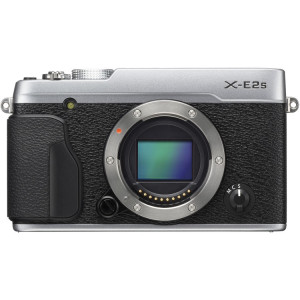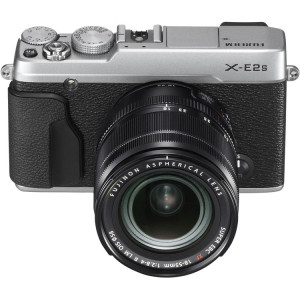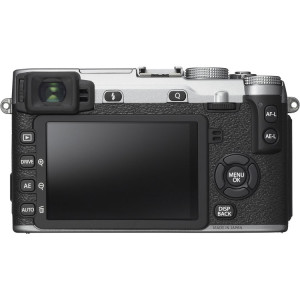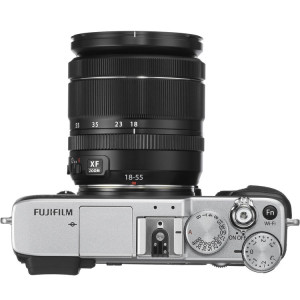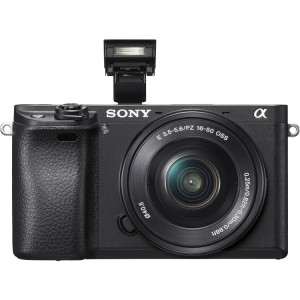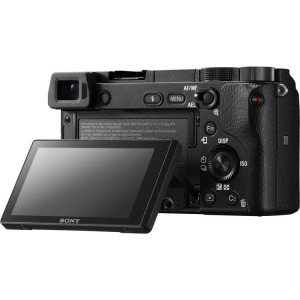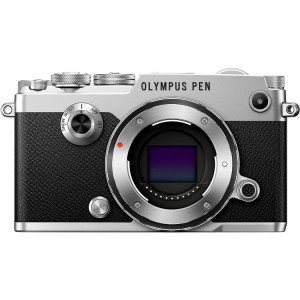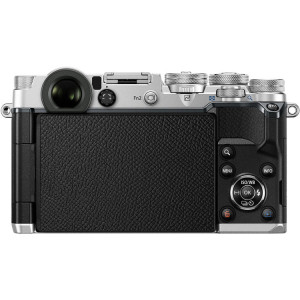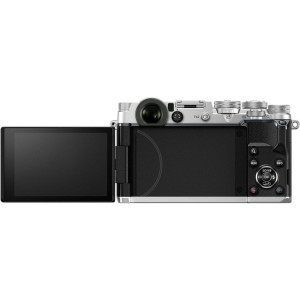Top 10 Best Mirrorless Cameras 2016 – For Beginners and Professionals
When Mirrorless Digital Cameras were first introduced in the market, many were skeptical about these cameras. Just like any 1st gen technology or product, flaws and other “rooms for improvement” are expected. This past year or two, mirrorless cameras became more and more popular. Companies like Fujifilm, Olympus, Panasonic and specially Sony have released quite a number of mirrorless cameras already. Some of these new mirrorless cameras are so good that it could even perform on par (or even better) than some DSLR cameras. I have listed here the top 10 best mirrorless cameras that are now currently available in the market. Some of these compact cameras are my personal favorite, some are 4K capable, most have an optical view finder, while others have a really fast AF system; but and all of them have interchangeable lens feature. The cameras below are listed according to their prices, from the cheapest to the most expensive. It doesn’t always mean that the most expensive is the best solution for you, but usually or most of the time, the most expensive ones are the most featured cameras around.
Pros and Cons of Mirrorless Camera
Before I proceed with my list, let me just share to you what are the advantages and disadvantages of a mirrorless camera. Just like the larger DSLR camera, a mirrorless camera may or may not be for you, depending on your need, profession, or application.
To start, the biggest advantage of a mirrorless camera over a DSLR is its size. Mirrorless cameras are generally small, compact, slim, and light; even the full frame mirrorless cameras. Another advantage is the autofocus. Some mirrorless cameras (not all) have hybrid AF, these means faster and more accurate AF. Some mirrorless cameras can even surpass the AF speed on some DSLR cameras. Another advantage is that taking videos is much easier since there is no mirror in between, and changing settings is a lot faster compared to a DSLR when shooting videos.
As of to date, some of the disadvantages of a mirrorless camera have already been addressed by newer models. So I don’t think I need to list those old cons anymore. The only real problems I encounter with mirrorless camera nowadays are shorter battery life and the lack of optical viewfinder. While some mirrorless cameras do have an electronic viewfinder, I still find the optical viewfinder better in most case and scenarios.
Top 10 Best Mirrorless Cameras for Q1 2016
Nikon 1 J5 Mirrorless Camera
First on my list is the Nikon 1 J5 mirrorless camera, first released last April 2015. It’s also one of the best cameras you can buy at sub $500 price tag. The Nikon 1 J5 features a 20.8MP CX-Format BSI CMOS sensor with EXPEED 5A image processor. It features a Hybrid AF with 105 phase-detection areas and ISO 12800 with high ISO noise reduction. It’s capable of shooting up to 60 fps and 20 fps with AF-C; and can also record videos at 4K UHD 2160p at 15fps and FHD 1080p at 60fps. It comes with user friendly functions like sports mode and in-camera time lapse.
The Nikon 1 J5 features a 3-inch touchscreen LCD display that can be tilted. It has built-in WiFi with NFC wireless connection, micro HDMI and USB 2.0 for wired connection. The Nikon 1 J5 is very compact at 98.3mm x 59.7mm x 31.5mm in size and weighs only 265g with battery and memory card installed.
The Nikon 1 J5 can be purchased with a 10-30mm lens kit (the cheapest option); or with 10-30mm and 30-110mm lenses; or with a 10-100mm lens at around $900 USD.
See latest pricing and availability of Nikon 1 J5 on Amazon here.
Sony Alpha A6000 Mirrorless Camera
Next on my list is the midrange Sony Alpha a6000 mirrorless digital camera which is also a sub $500 camera. The Sony a6000 is no new camera and it has in the market since February 2014. But until now, it is still one of the best-selling mirrorless cameras in the market. Sony recently released its predecessor which I will introduce briefly after the top 10 mirrorless camera. The Sony a6000 features a 24.3MP APS-C CMOS sensor with Bionz X image processor. It also features a hybrid AF with 25 contrast-detect and 179 phase-detection points.
The Sony Alpha a6000 is capable of shooting 11 fps continuous with subject-tracking, and it’s capable of up to ISO 25600. It also features functions like auto object framing, multi frame NR, diffraction correction, area-specific noise reduction and detail reproduction technology. When it comes to video capture, it’s capable of recording full HD video 1080p at 60fps and 24 fps.
Viewfinder in uncommon with these compact camera, specially with the earlier cameras. The good thing is that the Sony a6000 features a Tru-Finder 0.39-inch OLED Electronic View Finder with 1.4M dots. It also has a 100% coverage 3-inch LCD (non-touch) display that can be titled. It has built-in flash and a multi-interface shoe. For connectivity options, it has WiFi with NFC, micro HDMI, USB 2.0 and wired remote port.
The Sony Alpha a6000 mirrorless camera weighs only 344 grams with battery and memory card and is about 120mm x 67mm x 45mm in size. It’s available in body only or with various lens kits.
See latest pricing and availability of Sony A6000 on Amazon here.
Olympus OM-D E-M10 Mark II Mirrorless Camera
From here, it’s going to be above $500 and up, and the Olympus OM-D E-M10 Mark II is the next on my list, based on the current retail price of around $549 USD. The Olympus OM-D E-M10 Mark II was first released last August 25, 2015 so it’s still a fairly new camera. This mirrorless camera is a micro four thirds digital camera featuring a 16.1MP Live MOS sensor with TruePic VII Image processor. It’s capable of shooting up to 8.5 fps and up to ISO 25600.
But one of the key feature or advantage of the Olympus OMD EM10 Mark II is its 5-axis in-body image stabilization. This helps the user to take crisp images specially when you are not using a tripod. It can also capture full HD 1080p videos at 60 fps, and is capable of 4K time lapse shooting. Again, 4K time lapse shooting only and not 4K video. No 4K video here, only 1080p.
The micro four thirds Olympus OM-D E-M10 Mark II does have an OLED electronic viewfinder with 2.36M dots (in case you need this), and a 3-inch 1.04M dot LCD touchscreen display that can be tilted. For connectivity, it has micro HDMI, USB 2.0 and a built-in WiFi only. It’s a tad heavier than the a6000 at 390 grams and has a size of 119.5mm x 83.1mm x 46.7mm.
Experts claimed this camera to be one of the best sub $600 mirrorless camera and it also a bang for the buck considering its set of features and picture quality. It can be purchased as body only; or with M.Zuiko 14-42mm f/3.5-5.6 II R lens; or M.Zuiko 40-150mm f/4-5.6 R lens.
See latest pricing and availability of Olympus OM-D E-M10 Mark II on Amazon here.
Panasonic Lumix DMC-G7 Mirrorless Camera
Another sub $600 mirrorless camera is the Panasonic Lumix DMC-G7 mirrorless camera, first released on May 2015, and unlike the Onlympus OMD EM10 Mark II, this one is capable of 4K video capture. The Panasonic DMC-G7 is a micro four thirds mirrorless camera featuring a 16MP Live MOS sensor with Venus Engine 9 Image processor. It’s capable of up to 8 fps shooting and up to ISO 25600; and features DFD or Depth-From-Defocus AF technology.
Like I said earlier, the Panasonic Lumix DMC-G7 is capable of recording 4K UHD video at up to 1000Mbps and 30fps / 24fps, while full HD 1080p recording is at 60 fps. It also features 4K photo mode with pre-burst mode. The video clip is only up to 30 minutes (minus 1 second) and records on MP4 or AVCHD format. Video capture is one of the strong features of this camera.
The Panasonic DMC-G7 does have an OLED viewfinder with 2.36M dots, and a nice 3-inch 1.04M touchscreen display that is fully-articulated, meaning the screen can be tilted, swiveled, flipped and etc. For connectivity it has a 1/8″ microphone, 2.5mm sub-mini, micro HDMI, USB 2.0, Viera link, and WiFi. This camera weighs 415 grams with battery and memory card and measures 124.9mm x 86.2mm x 77.4mm.
Body only is not an option. The Panasonic DMC-G7 is sold with a 14-140mm f/3.5-5.6 POWER O.I.S. lens or a 14-42mm f/3.5-5.6 II MEGA O.I.S. lens.
See latest pricing and availability of Panasonic Lumix DMC-G7 on Amazon here.
Fujifilm X-T10 Mirrorless Camera
Now let’s move to the $600 price range and here there is the Fujifilm X-T10 mirrorless digital camera that was first released on May 2015. It features a 16.3MP APS-C X-Trans CMOS II sensor with EXR Processor II. It’s capable of up to 8 fps shooting and up to ISO 51200 (6400 for RAW). It features an intelligent Hybrid AF with 77 focus points.
The Fujifilm X-T10 also features film simulation mode, and electronic shutter. It has a 2.3M dots .62x OLED View Finder and a 3-inch LCD monitor that can be tilted. It shoots full HD 1080p video at 60 fps but it is reported that this camera is not so good for shooting videos due to poor video quality compared to similarly priced cameras.
The good news is that the X-T10 mirrorless camera captures good image quality at both high and low ISOs and offers pleasing colors. For connectivity options, it has a 2.5mm sub-mini, micro HDMI, micro USB 2.0 and its WiFi capable.
The Fujifilm X-T10 can be purchased as body only, or with a Fujinon XC 16-50mm f/3.5-5.6 OIS II lens, or a Fujinon XF18-55mm f/2.8-4 R LM OIS lens.
See latest pricing and availability of Fujifilm X-T10 on Amazon here.
Olympus OM-D E-M5 Mark II Mirrorless Camera
From here, we begin with the more serious priced mirrorless cameras starting with the Olympus OM-D E-M5 Mark II, released last February 2015, at a sub $900 price range. The Olympus OMD EM5 Mark II is a micro four thirds camera (it’s small and compact), and features a 16MP Live MOS Sensor with TruePic VII Image processor. It’s capable of shooting up to 10 fps continuous and 5 fps with AF. It features FAST AF contrast detection with 81 points and touch AF; and it’s capable of 1/8000th sec maximum shutter speed (or 1/16000th with electronic shutter).
The Olympus OM-D E-M5 Mark II has a special feature that enables it to do a 40MP high resolution shot by combining 8 images in-camera. Not only that, it also features an improved 5-axis VCM (voice coil motor) image stabilization to deliver sharper and clearer images. Again, no 4K video on this one, just your good old full HD 1080p at 60fps up to 77Mbps.
It also features a nice 2.36M dots electronic viewfinder with 1.48x magnification factor and eye proximity sensor. It has a 3-inch 1.037M dots OLED touchscreen display with variable angle positioning. It has micro HDMI, AV/USB multi USB 2.0, 1/8″ microphone, WiFi capable and has a clip-on rotating and bouncheable flash.
The Olympus OM-D E-M5 Mark II measures 124mm x 84mm x 46mm and weighs 410 grams (body only). The good news is its body is made of magnesium body and it’s weather-sealed. Other than its excellent build quality, this mirrorless camera is capable of capturing very good image quality with good dynamic range and color. The 40MP high resolution shot is great but it needs specific condition and lens to really shine.
See latest pricing and availability of Olympus OM-D E-M5 Mark II on Amazon here.
Panasonic Lumix DMC-GX8 Mirrorless Camera
The Panasonic Lumix DMC-GX8 is going to be my pick for the best mirrorless camera at sub $1000 price range, released last July 2015. It features a 20.3MP Digital Live MOS sensor with Venus Engine Image processor. This is a micro four thirds camera that is capable of shooting up to 10 fps with AF-S (30fps at 8MP) and up to ISO 25600. One key feature of the Panasonic GX8 is its Dual I.S. system that offers the use of both in-camera and in-lens image stabilization systems.
The Panasonic DMC-GX8 features Depth-From-Defocus and Starlight AF technologies and is capable of 4K photo modes and recording 4K UHD videos at 30fps or 24fps. It also features a 2.36M dots 0.77x tilting OLED Electronic Viewfinder and a 3-inch 1.04M dots variable angle touchscreen display.
It has 2.5mm sub-mini, micro HDMI, USB 2.0, Viera link and WiFi with NFC. The GX8 measures 133.2mm x 77.9mm x 63.1mm and weighs 487 grams with battery and memory card. It’s a bit heavier compared to other micro four thirds cameras, but its body features a rugged design and it is weather-sealed.
The Panasonic GX8 is great for 4K video recording and stills, and its fast AF system makes it a good choice for street photography as well.
See latest pricing and availability of Olympus OM-D E-M5 Mark II on Amazon here.
Fujifilm X-Pro2 Mirrorless Camera
The last three mirrorless cameras for my 10 best mirrorless cameras were supposed to be all from Sony. I was originally going to put the Sony Alpha a7 II (released last November 2014) in this spot with a current retail price of $1,698, but the Sony a7 II is old and is succeeded already by the a7R II and a7S II, and Fujifilm recently released the new X-Pro2 (January 2016) that is priced similarly with the a7 II. The X-Pro2 is also one of the most popular and talked about cameras nowadays. However, the Sony Alpha a7 II is still a good choice depending on your needs or shooting style.
The Fujifilm X-Pro2 features a newly-developed 24.3MP X-Trans CMOS III APS-C sensor with X-Processor Pro Engine and an Intelligent Hybrid Phase detection AF system with 273 AF points. The new sensor was designed to reduce moiré and false colors, combined with the X-Pro engine to achieve faster AF, lower noise and better color reproduction. It’s capable of shooting up to 8 fps and up to ISO 51200.
It also features an advanced hybrid multi viewFinder with multi-magnification function. It’s capable of 1/32000 sec maximum electronic shutter speed, 1/8000 sec maximum focal plan shutter and flash synchronization of up to 1/250 sec. It features a 3-inch 1.62M dots LCD monitor but it’s not tilt-able.
The Fujifilm X-Pro2 is not capable of recording 4K UHD videos, but it can record full HD 1080p videos at 60fps. It does have a 166 film simulation modes that includes grain effect and new ACROs monochrome mode. Still, reviewers claim that video capture is not its forte.
The X-Pro 2 features a retro design and features a magnesium alloy body with weather-sealing. It has micro HDMI, micro USB 2.0 and WiFi connectivity options. It can be purchased as body only or with a Fujinon XF35mm F2 R WR lens.
See latest pricing and availability of Fujifilm X-Pro2 on Amazon here.
Sony Alpha a7S II Full-Frame Mirrorless Camera
The Sony Alpha a7S II is a sub $3,000 mirrorless camera released last September 2015. This is one camera loaded with tons of features and it’s a full frame camera (no wonder the high price). The Sony a7S II features a 12.2MP full-frame Exmor CMOS sensor with BIONZ X image processor. It’s capable of up to 5 fps shooting and up to ISO 409600. It also features a Fast Intelligent AF with 169 AF points.
Aside from the impressive specs mentioned above, the Sony a7S II features a 5-axis SteadyShot Inside stabilization system. It also features S-Log3 Gamma and display assist function and internal 4K UHD video capture at 30fps or full HD 1080p at 120 fps.
The Sony a7S II features a 3-inch 1.2M dots titling LCD display paired with a 0.5″ 2.36M dots XGA OLED Tru-Finder Electronic Viewfinder. It comes with the usual connectivity options like micro HDMI, miro USB 2.0, 1/8″ headphone and microphone and it also has WiFi with NFC.
The Sony a7S II is basically ideal for video recording and has great low-light performance.
See latest pricing and availability of Sony a7S II on Amazon here.
Sony Alpha A7R II Full-Frame Mirrorless Camera
The Sony Alpha a7R II is one serious full-frame camera released last June 2015. It’s currently priced at around $3,200 USD and is geared towards professional photographers. The Sony a7R II features a 42.4MP Exmor R BSI CMOS sensor with BIONZ X Image processor. It features a 5-axis in-body image stabilization with 399 phase-detect AF points (now that’s a lot of AF points).
The Sony a7R II only has 5 fps of continuous shooting but ISO is up to 102400 and features a durable reduced-vibration shutter design with silent shutter mode. It has a 0.5″ 2.36M dotsXGA OLED Tru-Finder EVF and a 3-inch 1.22M dots tilting LCD monitor and features similar connectivity options with the Sony a7S II.
It also features a full magnesium alloy body with weather-sealing and weighs around 625 g with battery and memory card. I could go on and on with the set of features this camera has, but to make this short the Sony a7R II is loaded with tons of features resulting to a fantastic photo and video quality. It also performs great on low light situation thanks to the first-ever BSI full-frame sensor and AF in this camera is impressively fast and accurate.
Currently, the Sony a7R II is going to be my top and the best (full-frame) mirrorless camera. Price is definitely high, but it won’t let you down when it comes to quality.
See latest pricing and availability of Sony a7R II on Amazon here.
Newly Released Mirrorless Camera this 2016
Aside from the top 10 best mirrorless digital cameras I mentioned above, there are three new mirrorless cameras that are also noteworthy to mention and consider. These three (or some of these) might even replace some of the cameras above in the same price category. Again let’s start from the lowest price and up.
Fujifilm X-E2S Mirrorless Camera
The Fujifilm X-E2S mirrorless camera is one of the first mirrorless cameras released early this year (January 2016). It looks like or shares the same retro design of the X-Pro2, I guess you can call this one its little brother; and it’s the successor to the also popular X-E2 released last 2013. It currently retails for around $699, so it’s another sub $700 mirrorless camera that you might want to consider.
For starters, the Fujifilm X-E2S mirrorless camera features a 16.3MP APS-C X-Trans II CMOS sensor with EXR Processor II. It’s capable of shooting up to 7 fps and up to ISO 51200. It’s using an intelligent Hybrid AF with 49 pointa single point AF and 77 point zone and wide/tracking AF modes. Its Silent Electronic Shutter is capable of exposures up to 1/32000 sec. and has 11 film simulation modes including Classic Chrome.
The Fujifilm X-E2S features a 0.5″ 2.36M dots OLED EVF with 0.005 sec display lag time, paired with a 3-inch 1.04M dots LCD monitor. No 4K recording on this one, but it can record full HD 1080p at 60 fps (like most mirrorless cameras). It also has micro USB 2.0 and WiFi for its connectivity.
It weighs around 349 grams with battery and memory card and measures 129mm x 74.9mm x 37.2mm. The Fujifilm X-E2S mirrorless camera is available as bod only or with a Fujinon XF18-55mm f/2.8-4 R LM OIS lens.
See latest pricing and availability of Fujifilm X-E2S on Amazon here.
Sony Alpha a6300 Mirrorles Camera
Next one is from Sony, and it’s the successor of the aging Sony a6000 listed above – the Sony Alpha a6300. The new Sony a6300 first became available only last month (February 2016) but it quickly gained popularity. Many were happy with the new mirrorless camera, but some were also quite disappointed due to the lack of touchscreen and some heating issues with 4K? (I’ll have to dig deeper into this heat issue).
The Sony a6300 falls under the sub $1000 mirrorless camera as it is currently retailed at around $998 (body only). It features a 24.2MP APS-C Exmor CMOS sensor with BIONZ X image processor and can shoot up to 11 fps and up to ISO 51200. What’s impressive about this new mirrorless camera is its 4D Focus with 425 phase detect points and it’s dubbed as the world’s fastest AF speed with only 0.05 sec.
Aside from the stunning images this camera can produce, it can also shoot 4K UHD at 30fps and 1080p at 120fps. The Sony a6300 features an XGA Tru-Finder 2.36M dots OLED EVF and a 3-inch 921K dots tilting LCD monitor. For connectivity, it has a 1/8″ microphone, micro HDMI, micro USB 2.0 and a built-in WiFi with NFC.
The new Sony a6300 is a bit heavier compared to its predecessor at 404 grams with battery and memory card, but its body is made of magnesium alloy with weather-sealing. It’s available as body only or with a Sony 16-50mm f/3.5-5.6 OSS Zoom lens.
See latest pricing and availability of Sony a6300 on Amazon here.
Olympus Pen-F Mirrorless Camera
Last but not the least is the Olympus Pen-F Micro Four Thirds Mirrorless camera, released early this year (January 2016) and comes with a retail price of $1,199 USD. It features a new 20.3MP Live MOS Four Thirds format sensor with TruePic VII Image processor. It can shoot up to 10 fps and up to ISO 25600.
The Olympus Pen-F is one of those mirrorless cameras that features a 5-axis in-body image stabilization with automatic panning detection and features a 50MP high resolution shot mode. Shutter speed is 1/8000 sec or 1/16,000 sec with e-shutter and has a creative control dial lets you directly access 4 functions, including Monochrome, Color Profile Controls, and Art Filters.
No 4K videos with the Olympus Pen-F as well, but it can shoot full HD 1080p at 60 fps. It has a 2.36M dots OLED EVF paired with a 3-inch 1.037M dots fully articulating touchscreen display. Fully articulating displays are really useful specially when shooting at difficult angles and very low positions.
The image quality with the Olympus Pen-F seems to be good enough, but at this price range I would expect that it can shoot 4K video as well, and/or have weather-sealing.
See latest pricing and availability of Olympus Pen-F on Amazon here.

